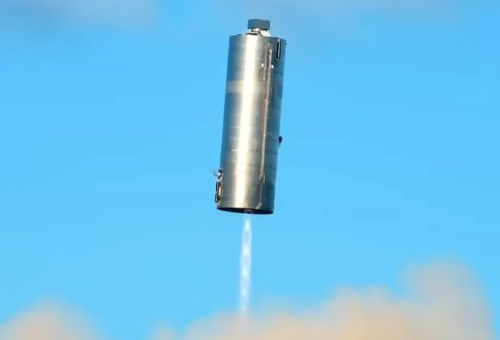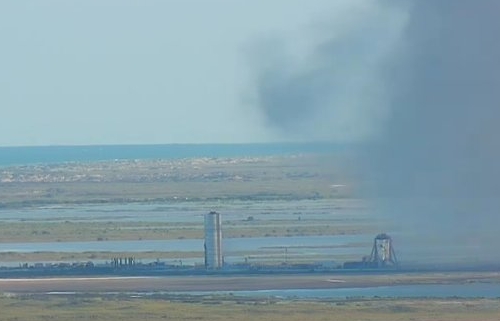Hayabusa-2’s future asteroid targets
Link here. There are two prime candidate asteroid targets, both near Earth astroids.
The possible secondary targets include the oblong asteroid 2001 AV43 or the asteroid 1998 KY 26. They’re each about the size of a large house and both orbit the Sun in roughly 500 days. The proposed plan would see Hayabusa 2 arriving at 2001 AV43 in the late 2029 time frame, or reaching 1998 KY 26 in July 2031. Both asteroids have a low enough relative speed relative to the spacecraft to put them within (eventual) reach after Hayabusa 2’s December flyby.
Interestingly, 2001 AV43 will fly 313,000 km from Earth (0.8 times the Earth-Moon distance) on November 11, 2029.
The two asteroids were selected from an initial field of 354 candidates, which was winnowed down based on accessibility and scientific interest. Both are fast rotators, as evidenced by their light curves, each spinning on its respective axis once every 10 minutes. This represents the shortest “day” of any known object in the solar system, suggesting that these asteroids are in fact solid objects and not simply loosely aggregated “rubble piles.” A visit to one of these asteroids would mark the first time a space mission has seen such an enigmatic fast rotator up close.
The asteroid 1998 KY26 is also a possible carbonaceous (C-type) asteroid, and Hayabusa 2’s exploration of such a space rock would be another first.
Going to 1998 KY26 would also require a distant pass of another asteroid. Going to 2001 AV43 would require a fly-by of Venus, which could provide more data on that planet. Based on this information, my guess is that they will opt for 1998 KY26.
The decision must likely be made before Hayabusa-2 drops off its Ryugu samples to Earth on December 6, 2020.
Link here. There are two prime candidate asteroid targets, both near Earth astroids.
The possible secondary targets include the oblong asteroid 2001 AV43 or the asteroid 1998 KY 26. They’re each about the size of a large house and both orbit the Sun in roughly 500 days. The proposed plan would see Hayabusa 2 arriving at 2001 AV43 in the late 2029 time frame, or reaching 1998 KY 26 in July 2031. Both asteroids have a low enough relative speed relative to the spacecraft to put them within (eventual) reach after Hayabusa 2’s December flyby.
Interestingly, 2001 AV43 will fly 313,000 km from Earth (0.8 times the Earth-Moon distance) on November 11, 2029.
The two asteroids were selected from an initial field of 354 candidates, which was winnowed down based on accessibility and scientific interest. Both are fast rotators, as evidenced by their light curves, each spinning on its respective axis once every 10 minutes. This represents the shortest “day” of any known object in the solar system, suggesting that these asteroids are in fact solid objects and not simply loosely aggregated “rubble piles.” A visit to one of these asteroids would mark the first time a space mission has seen such an enigmatic fast rotator up close.
The asteroid 1998 KY26 is also a possible carbonaceous (C-type) asteroid, and Hayabusa 2’s exploration of such a space rock would be another first.
Going to 1998 KY26 would also require a distant pass of another asteroid. Going to 2001 AV43 would require a fly-by of Venus, which could provide more data on that planet. Based on this information, my guess is that they will opt for 1998 KY26.
The decision must likely be made before Hayabusa-2 drops off its Ryugu samples to Earth on December 6, 2020.









